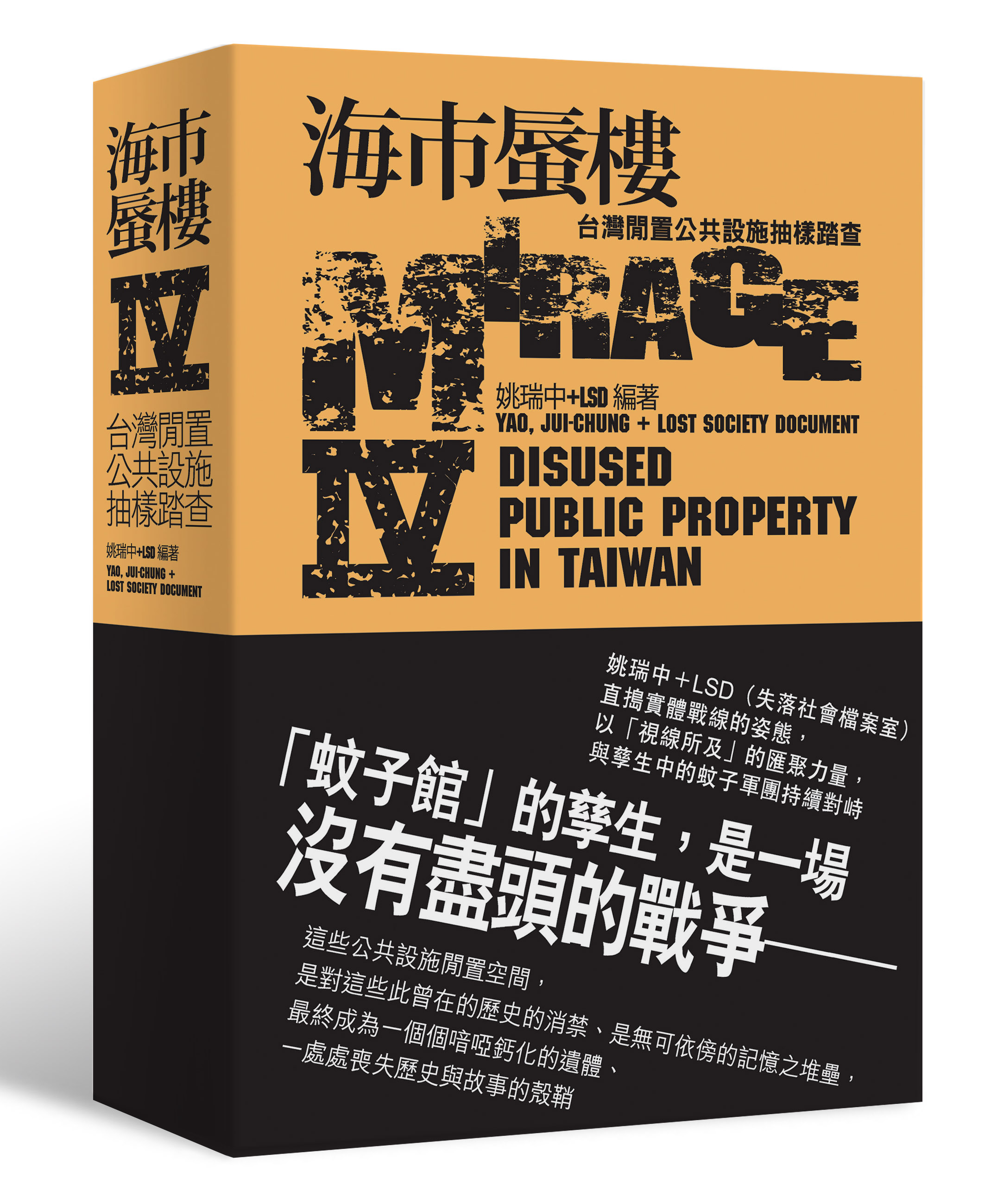Mirage - Disused public property in Taiwan Ⅳ

DURATION: 2014-10-11 ~ 2014-10-11
OPENING: 2014-10-11 14:00-PM
VENUE: Taipei Contemporary Art Center
ADDRESS: No.19-1, Andong St., Zhongshan Dist., 10492 Taipei
TCAC IS PLEASED TO INVITE YOU TO BOOK LAUNCH “MIRAGE IV: DISUSED PUBLIC PROPERTY IN TAIWAN”. 2014.10.11 SAT 2-4PM Speaker: YAO Juichung|Moderator: LU Pei-Yi No. 19-1, Andong St. Taipei 10492 TEL: 2731-5556 YAO Jui-Chung YAO Jui-Chung was born in 1969 in Taipei. Graduated from The Taipei National University of the Arts. he represented Taiwan at the Venice Biennale and took part in the International Triennale of Contemporary Art Yokohama, APT6, Shanghai biennial, Shenzhen Sculpture Biennale, Venice Architecture Biennale, Media City Seoul Biennale and Asia Triennial Manchester. Win The Multitude Art Prize on 2013 and 2014 ABF Art Prize. The themes of his works are varied, but most importantly they examine the absurdity of the human condition. also published “Installation Art in Taiwan” ,” The New Wave of Contemporary Taiwan Photography”, ”Roam The Ruins of Taiwan” , “Performance Art in Taiwan”, ”Ruined Islands”, ”Yao Jui-chung”, ”Beyond Humanity”, "Nebulous light", "Biennial-Hop", "Mirage Ⅰ&Ⅱ&Ⅲ&Ⅳ", "Some thing blue". “Mirage IV: Disused Public Property In Taiwan” When we launch the photography and writing project of `Mirage’ with students from March, 2010, the large number of disused public property in Taiwan was not expected. It could be suggested that these public property cost much more than the amount of money – over ten billions - that recognized by the government, as the land cost and inflation was not included. Moreover, due to the inefficiency in related executive departments and the lack of passing down successful experiences, although several meetings were hold with the relevant authority, the outcome is disappointing. The crucial issues of idle public facilities are complicated and interrelated. Referring to these one hundred cases listed in the book, we could briefly sort out the factors and causes as below: the originally assigned use waning in time, facilities constructed for elections and political reasons which are not in line with public wills, corruption issues including bidding collusion, bid rigging, official malfeasance and construction fraud, low construction quality, incapable administrative procedures, disused space resulting from sectors relocation to new buildings, insufficient fund for maintenance of heritage and historical buildings, more concerns placed on capital expenditure than current expenditure, a shift from cultural protectionism to a template of culture industry, invalid plans of space reuse, etc. In the emergence of the M-shape society in Taiwan, a sense of being exploited within the public has risen greatly, resulting from the soaring house prices, the unfairness of tax system, the failure of education reform, and the low youth employment rate, which also has lowered the public trust in the government. These ongoing construction of mosquito-breeding sites become a long-term finical burden to the government. To thoroughly decrease and prevent the mosquito-breeding sites, the government should strictly supervise the public construction policy in order to avoid raising mosquito larvae sites in advance. Meanwhile, examining the number of unused public facilities with the help of citizen media and report system, the government can obtain a detail list in hand for further use and allow reuse policymaking to be of flexibility. Therefore, based on social welfare, more idle spaces can be released and returned to the people in need. (Excerpt from the artist’s preface)